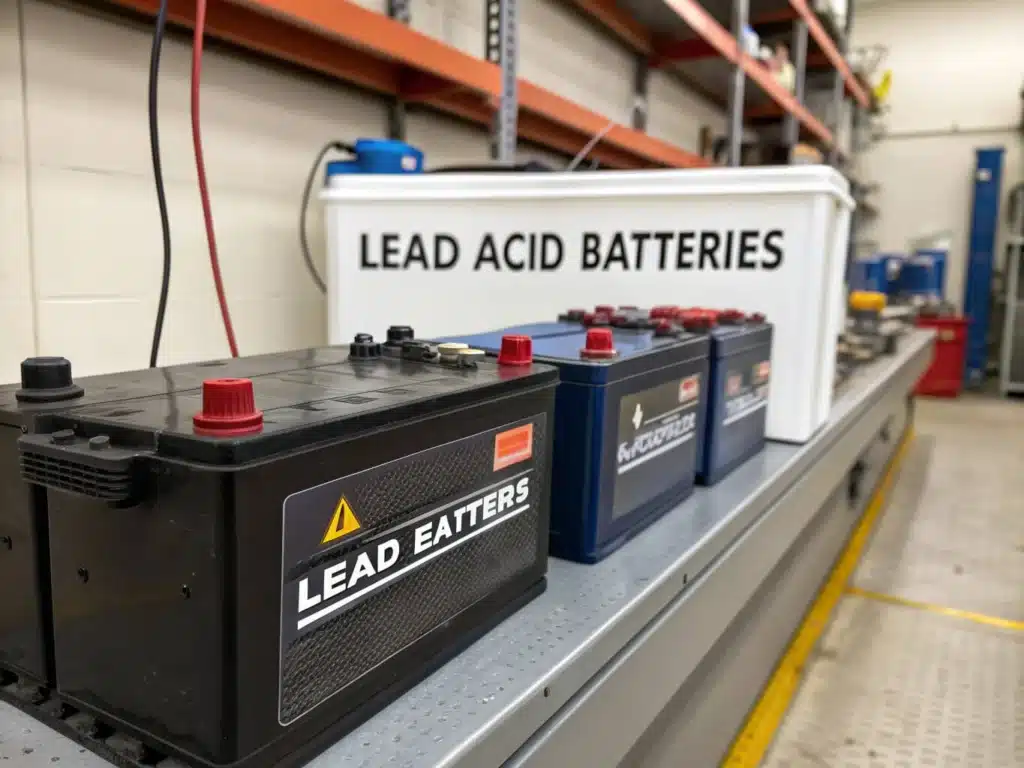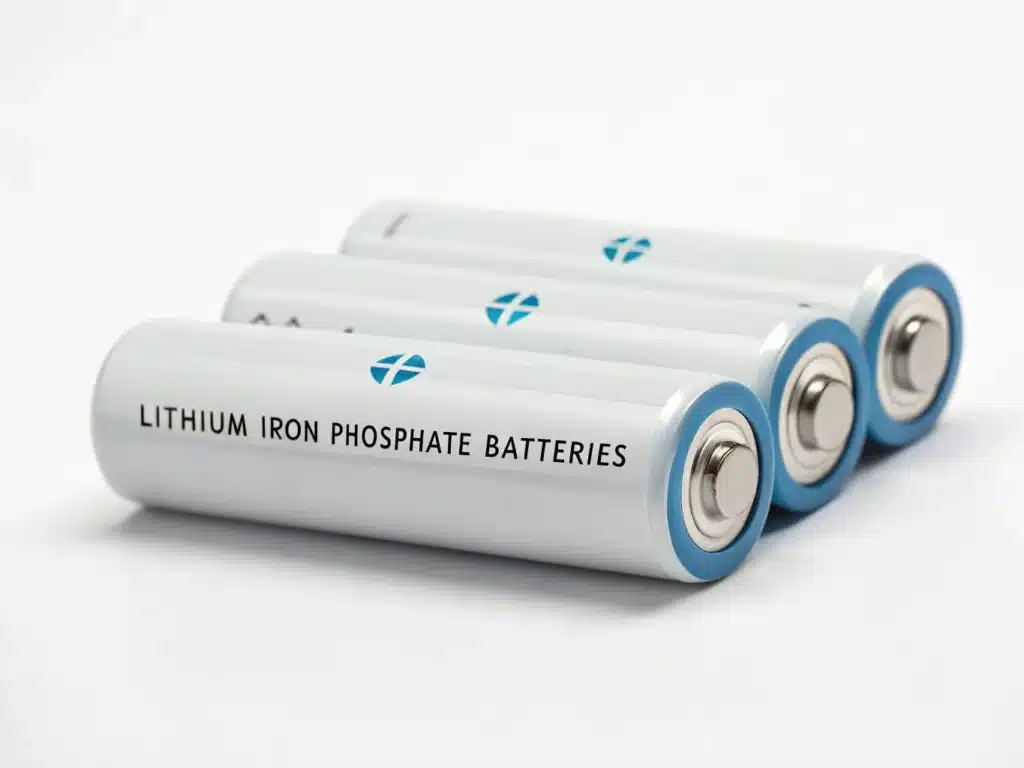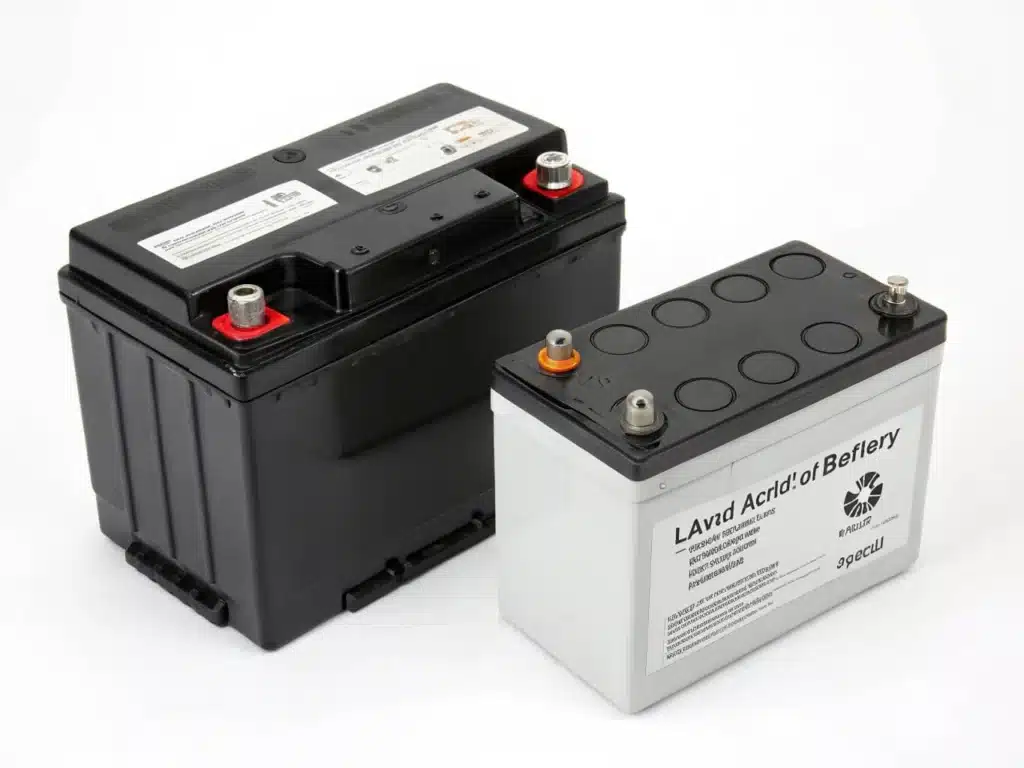Whether you are planning your next RV adventure or setting up an off-grid solar system, reliable power storage is the core link, which often leads you to a critical decision: choose the time-tested lead-acid battery or embrace lithium batteries? This is not only about the initial investment, but also has a profound impact on the system’s performance, long-term cost of use, and the convenience of daily maintenance.
This guide is tailored for RV owners, boat owners, solar system users, golf cart owners and DIY enthusiasts. It aims to help you make the most informed choice based on your unique needs by comprehensively and side-by-side analyzing all the key differences between the two in terms of performance, lifespan, available capacity, cost, safety and maintenance.
Table of Contents
ToggleWhat is lead-acid battery

Lead-acid battery is a traditional battery with mature technology, wide application and a long history. In situations where repeated charging and discharging are required, regular water addition and maintenance are required. The main types are: sealed maintenance-free AGM and Gel batteries. They are both economical choices, but relatively bulky and short-lived.
What is lithium battery

Lithium battery: Lithium iron phosphate (LiFePO4) battery is designed for deep cycle applications such as RVs and solar energy. It is known for its extremely high safety. Its core advantages are light weight, ultra-long cycle life (up to 3000+ times), and more actual available power. It is an advanced and efficient energy storage solution.
Comprehensive comparison
The following compares lead-acid batteries and lithium iron phosphate batteries from different angles, allowing you to objectively understand all the key differences between the two.

Energy density
Lithium batteries are much lighter (usually more than half the weight) and can also be smaller in size, which is crucial for load and installation convenience in vehicles and ships.
Cycle Life
Lithium batteries have a cycle life many times that of lead-acid (thousands vs hundreds), which means longer use, far fewer replacements, and greater long-term value.
Discharge depth
Lithium batteries can safely discharge more electricity (close to the nominal capacity), while lead-acid batteries are recommended to only use half of the power to protect their lifespan. Therefore, under the same nominal capacity, lithium batteries can actually use more electricity.
Charging speed and efficiency
Lithium batteries charge much faster with less energy loss (higher efficiency), can be fully charged more quickly and take full advantage of charging energy sources, such as solar energy.
Voltage
The voltage of lithium batteries is more stable when discharging. Unlike lead-acid batteries, the voltage will drop significantly as the power decreases, which is more friendly to the operation of electrical appliances.
Maintain
Lithium batteries are almost completely maintenance-free, while lead-acid batteries (especially flooded ones) require regular inspection and maintenance. Saving time and effort is a major advantage of lithium batteries.
Temperature
Lead-acid batteries suffer severe capacity loss at low temperatures; lithium batteries are relatively more temperature resistant, but low-temperature charging requires BMS protection and is suitable for a wider range of climates.
Safe
Lead-acid batteries have the risk of gas evolution and acid leakage; lithium iron phosphate batteries are very safe in themselves and can ensure reliable operation when combined with a high-quality BMS. They must be installed and used correctly.
Costs
Lithium batteries are much more expensive to purchase upfront, but given their extremely long life, high efficiency and maintenance-free nature, their total cost of ownership (TCO) over their lifetime is often lower than lead-acid batteries, which require multiple replacements.
| Feature | Lead Acid (Deep Cycle: FLA/AGM/Gel) | Lithium Iron Phosphate (LiFePO4 / LFP) |
| Weight & Volume | Heavy & Bulky (Lower Energy Density) | Much Lighter & Compact (Higher Energy Density) |
| Lifespan (Cycle Life) | Shorter (e.g., 300-1000+ cycles) | Much Longer (e.g., 3000-7000+ cycles) |
| Usable Capacity (DoD) | Limited (Recommended 50% DoD) | High (80-100% DoD Safely Usable) |
| Charging Speed | Slower | Much Faster |
| Charging Efficiency | Lower (~80-85%) | Higher (>95%) |
| Voltage Stability | Voltage Drops Notably During Discharge | Stable Voltage Output Until Empty |
| Maintenance | Regular (FLA) / Minimal (AGM/Gel) | Virtually None / Maintenance-Free |
| Temperature Performance | Poor in Cold (Significant Capacity Loss) | Good Heat Tolerance; Cold Charging Restricted (<0°C requires BMS protection) |
| Safety | Gassing (Explosion Risk), Acid Leaks | Very Stable Chemistry; Requires BMS for Safety Management; No Gassing/Leaks |
| Upfront Cost | Lower | Significantly Higher |
| Total Cost of Ownership (TCO) | Often Higher (due to replacements) | Often Lower (due to longevity & efficiency) |
Which battery is right for you
Which battery you choose depends on your specific needs and priorities.
When you are on a tight budget and usage is infrequent, the low upfront investment of lead-acid batteries may be the main attraction.
If you don’t want to maintain batteries, lithium batteries are your best choice.
If you use them in an extremely cold environment, the performance of both will decline. Lithium batteries require special attention to BMS low-temperature charging protection; lead-acid batteries will have a sharp drop in capacity.
If you value long-term value, for daily deep-cycle users, although the initial investment of lithium batteries is high, their lower total cost of ownership (TCO) advantage will be apparent; if it is used lightly occasionally, the cost advantage of lead-acid batteries is obvious.
Summary
Now that you have mastered the core differences between the two, please consider this information in conjunction with your unique application needs, daily usage habits, and financial budget. The key to choosing is balance: Are you willing to pay a higher initial price for lithium batteries in exchange for their long-term performance advantages, longer service life, and great convenience? You can also contact us to get the best lithium battery solution.
FAQs
The following key measures can extend the life of lithium-ion batteries:
Partial discharge cycle: Keep the battery capacity between 20% and 30% and avoid full discharge or overcharging.
Avoid extreme temperatures: Avoid charging below 0°C. Maintaining a suitable temperature range is critical to battery life.
Appropriate charging current: Avoid using excessively high charging and discharging currents, as excessive currents will put stress on the battery.
Additionally, using a charger that is compatible with your battery technology can also help extend battery life.
The time required to fully charge the battery depends on the state of discharge of the battery and the type of charger. When fully discharged, the charging time is approximately 8 to 10 hours. If the battery is not fully discharged, the charging time may be shortened to 6 to 8 hours. It is recommended not to charge for more than 12 hours.
For solar energy storage systems, lithium batteries are usually a better choice due to their longer cycle life, higher energy density and faster charging speed. Although the initial investment is higher, lithium batteries provide higher economy and efficiency from the perspective of long-term use and maintenance costs.
